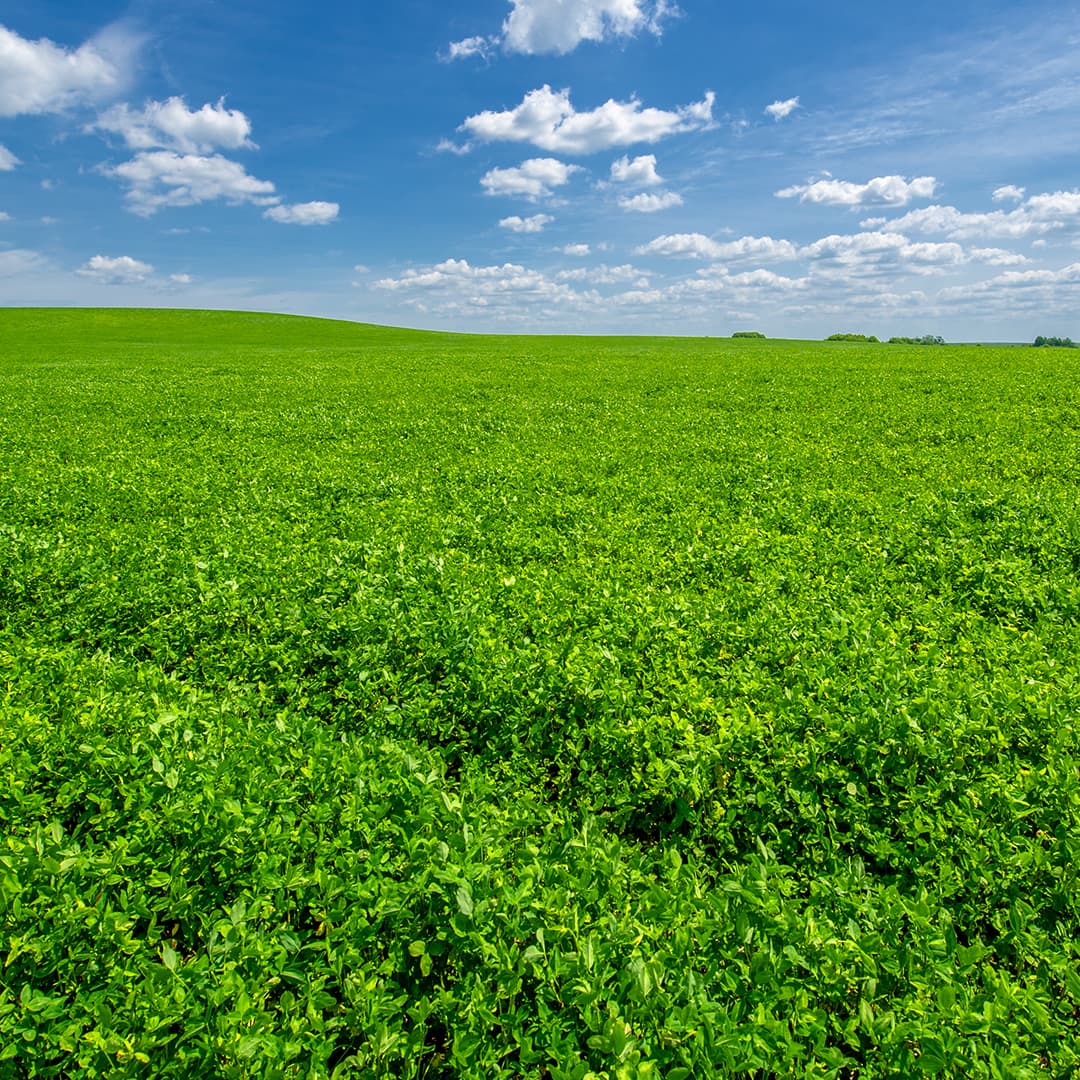Blue aphids have become a persistent problem in many fields, particularly in the western U.S. Aphids are small insects which directly feed on plant sap and can serve as vectors of plant disease, and blue aphids can be more harmful than some of their counterparts like the pea aphid. Damaged plants often wilt and turn chlorotic, and in some places can be killed altogether. Integrated pest management is critical when controlling these pests, as beneficial insects are an important part of managing aphid populations.
Identification
- Adults are blue-green in color and approximately 3/16 inches in length
- Distinguished from pea aphids by antennae
- Blue aphids have brown antenna, whereas pea aphids have 3-4 narrow dark bands on their antennae
Life cycle
- Aphids have a very complex lifecycle, consisting of both asexual and sexual reproduction
- Overwinters as eggs in most areas of the Midwest
- Eggs are attached to stems and leaf litter in the fall
- Eggs hatch in early spring, with young nymphs feeding on new growth
- Populations decrease rapidly when temperatures reach ≥85° F, as they favor cooler temperatures
- Most infestations will occur in early spring to early summer, depending on location and spring temperatures
- In summer, females give live birth to clones, dramatically increasing the number of generations per year
|
 |
How can we look for them?
- Stem counts are the most viable method of estimating aphid populations
- Sample at least 20-30 stems throughout the field, counting the number of aphids as well as the average stem length
- Use the table below to determine at what density control measures are warranted
What does their damage look like?
- May cause yellowing of plants, as well as severe stunting
- Leaves of severely infected plants eventually wilt and curl, and then turn necrotic
- Reduces yield, causing stunting and in some cases death
|
 |
How do they migrate?
- Winged forms are produced periodically to find new host plant populations
- These winged insects are able to move long-distance on air currents
Impact on plant production
- Blue aphids inject toxins directly into the alfalfa when feeding
- Toxins may remain in the plant into the next 1-2 cuttings
- Damage is worse on younger, more immature alfalfa plants
- Blue aphid toxin will likely cause stunting of plants, reducing yield and potentially killing some alfalfa plants
- Palatability may be reduced as well due to fungal growth on the honeydew secretions
|
 |
What can we do to control?
- The economical threshold for control of blue aphids is lower than for pea aphids due to higher damage potential
Table 1. Economic thresholds for control of aphids in alfalfa
| Alfalfa Growth Stage |
Blue alfalfa aphid |
Pea aphid |
| Seedling |
1 |
5 |
| <10” |
40 |
10 |
| 10-20” |
75 |
30 |
| >20” |
100 |
50 |
- Select resistant varieties where available
- Conserve beneficial insect populations as much as possible
- If using chemicals, choose insecticides that offer excellent initial control to avoid a possible resurgence
- Because of multiple generations of clonal reproduction, developing insecticide resistance is a primary concern
- If using chemicals, ensure complete coverage to avoid survivors in a population
- Contact your local Pest Control Agent, Certified Crops Advisor, or Forge Genetics International team member to discuss all options available for control






